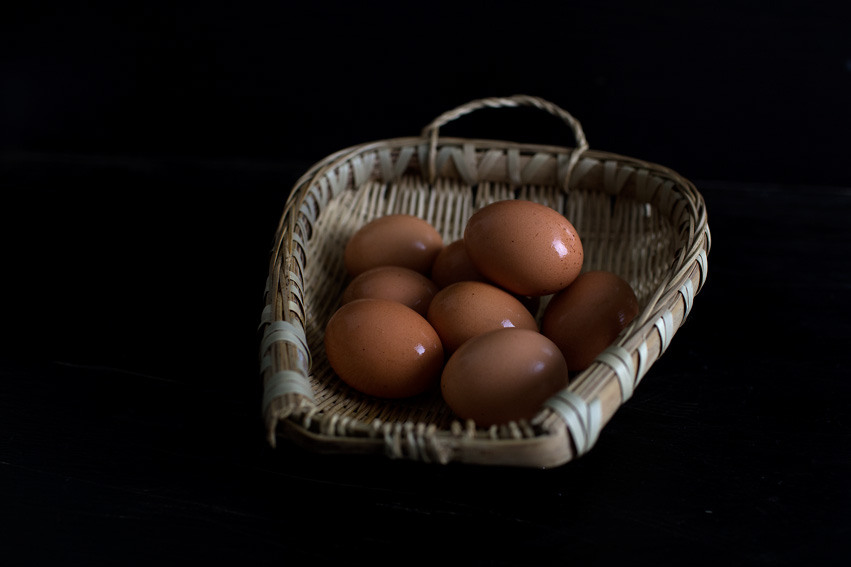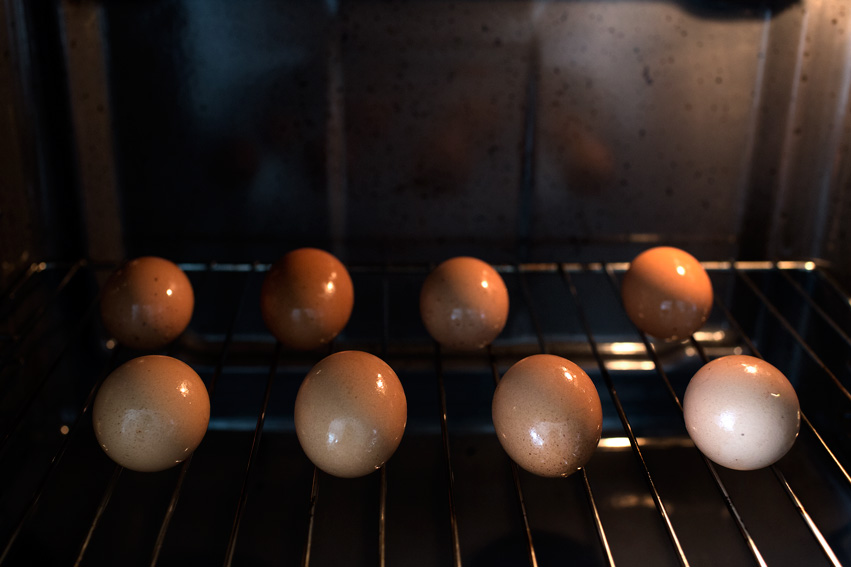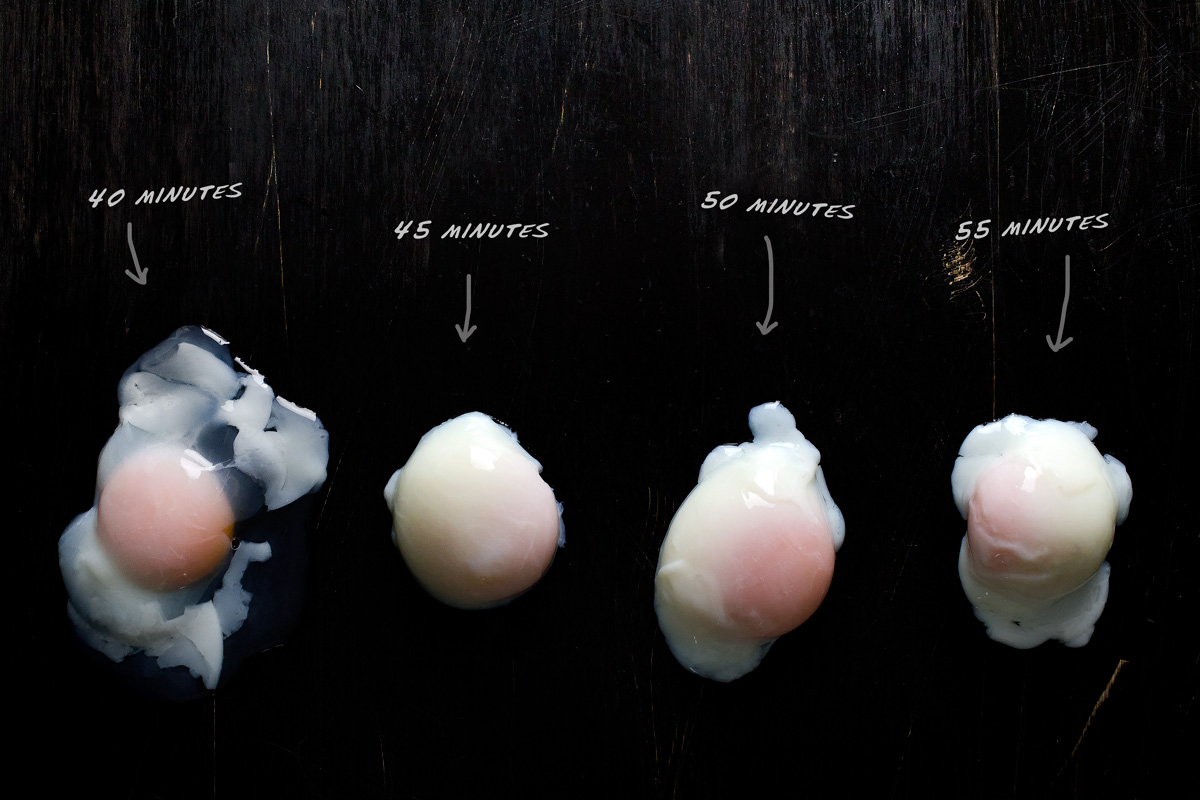PERFECTLY BAKED SAUNA EGGS
SOMEWHERE IN BETWEEN 50~55 MINUTES, IS THE FIFTY SHADES OF YELLOW
OK, I admit. For someone who has, more than once, cried sympathy for her egg-allergy, I spend an unnatural amount of time studying the perfect way to cook them. Not just on my shortcut – 15 seconds to be exact – to creamy and velvety scrambled eggs, but there are up to this point… THREE POSTS in total, solely dedicated to detailed ways of making onsen tamago, aka hot spring eggs. There was the genesis-post (where my heartbreaking journey on losing one of my favourite things to eat was well documented), then a second one, then a third one. And now, here’s the fourth.
But, this post isn’t technically about “onsen/hot spring” eggs, where the eggs are submerge in a hot bath of a constant temperature at 158F/70C. If I may, this is more about something I’d like to call, the sauna eggs. And this could proven a revelation for those of you out there, who aren’t particular keen on babysitting a thermometer and a pot of hot water, because these, these are baked in the oven.
This mad scientific conduct came after I spotted this on Pinterest a few days ago. But instead of omg-this-is-genenius-!, I said to myself, holy-shit-what-a-waste-!. I mean, if someone were to look for a no-fuss method of cooking something, it shouldn’t be applied to what’s already the most fuss-less thing to do on earth, like hard-boiling an egg… Instead, it should be calibrated, fine-tuned, solely dedicated to achieving the most elegantly beautiful transformation of a single ingredient, this mother earth has to offer.
So I set out my expedition on Wednesday. Three cartons of eggs and a few disappointments later, I’ve arrived at the truth. Now, there are obviously 2 major factors at play here, being the temperature, and the cooking time. The temperature, in this case a less interesting subject, is found to be sitting slightly higher than the hot bath-method, at 175F/80C ~ 185F/85C. But the cooking time is what’s really interesting here. Somewhere in between 50~55 minutes, is where the fifty shades of yellow happen.
Judging purely from the appearance of the cracked eggs, you may think there isn’t much difference between 45 to 55 minutes. And that’s because the difference lies within the yolk. At 45 minutes, the yolk is still very runny and almost completely raw. Then at 50 minutes, the yolk has thickened slightly, runs slower, but still hasn’t hit the sweet spot of resembling thick custard. But in the next mere 5 extra minutes, you can see how the yolk has completely solidified, overcooked, looking more like a soft-boiled egg than what we really want.
The conclusion? A very specific 53 min at a temperature between 175F/80C ~ 185F/85C. Little, precious, opaque jewels of deliciousness with a texture lurking between the lines of fluid and solid, jelly and custard. They are perfect, worth every pain of a one-way infatuation from afar, well, for me at least. For you, it’s gonna be a full-blown romance.




